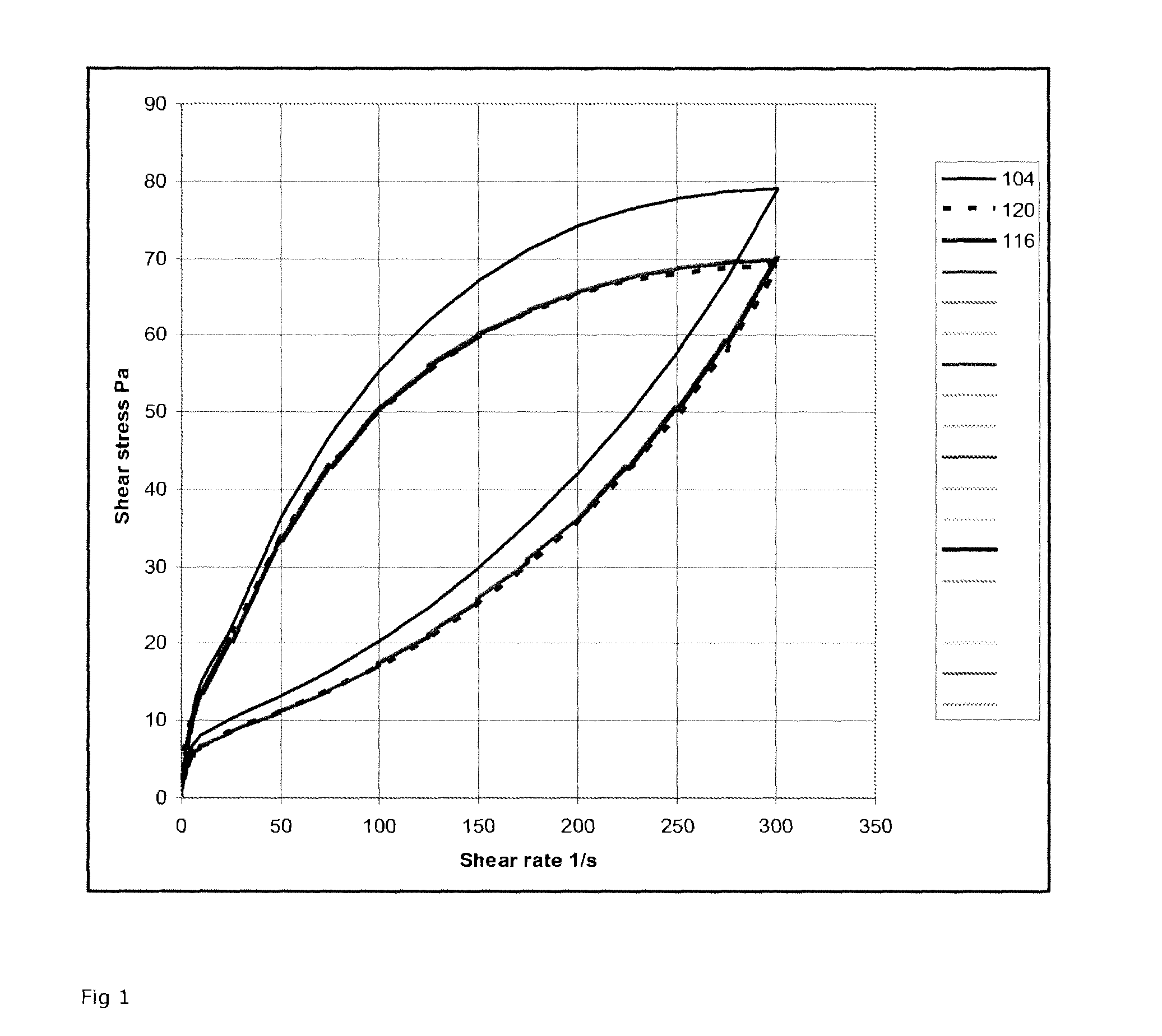Method for producing a fermented milk product
a technology of fermented milk and milk products, which is applied in the field of fermented milk product production, can solve the problems of difficult to produce low fat fermented milk products without reducing sensory quality, exopolysaccharides, etc., and achieves high mouth coating, high gel stiffness, and high viscosity.
- Summary
- Abstract
- Description
- Claims
- Application Information
AI Technical Summary
Benefits of technology
Problems solved by technology
Method used
Image
Examples
example 1
[0042]Comparison of fermented milks produced with Streptococcus thermophilus+the Lactobacillus species fermentum with traditional yoghurts produced with Streptococcus thermophilus+Lactobacillus delbruckii subsp. bulgaricus.
[0043]Four different strains of Streptococcus thermophilus were applied (one by one) in order to get a general view of the Lactobacillus properties—irrespectively of the selection of Streptococcus thermophilus strain (hereafter named: ST-strain).
[0044]12 fermented milks were produced in 200 mL scale in duplicate. Lactobacillus strains fermentum (n=1) and delbrueckii subsp. bulgaricus (n=2) were tested one by one in combination with 4 different ST-strains strains each. Five percent of ST-strain CHCC7018 (DSM21408) was added to each culture to ensure a sufficient acidification rate.
[0045]The milk base consisted of milk with 1.5% fat, added 2% skimmed milk powder and 5% sucrose. The milk base was heat-treated 20 min. at 90 deg. C and cooled to the fermentation tempe...
example 2
[0055]Effect of Lactobacillus fermentum DSM 22584 in low fat yoghurt.
[0056]2 fermented milks were produced in 3 L scale. Lactobacillus fermentum DSM 22584 was tested in combination with a blend of 2 different Streptococcus thermophilus strains (DSM22587and DSM 22884) and presence of Lactobacillus delbruckii subsp. bulgaricus strain DSM 19252. The control culture contained only the same two ST strains and Lactobacillus delbruckii subsp. bulgaricus DSM19252 (see table 4).
[0057]The milk base consisted of skimmed milk added 2% skimmed milk powder. The milk base was heat-treated 6 min. at 95 deg. C and cooled to the fermentation temperature 42 deg. C. Hereafter it was inoculated with 0.018% lactic acid bacteria culture (F−DVS=Frozen Direct Vat Set culture). The culture compositions appear in table 3. After fermentation to pH 4.55 a mechanical post treatment was applied (42 deg.C / 2 bar / flow 45 l / hour) during 1 minutes and the yoghurts were cooled to 5 deg. C and stored at 5 deg C until an...
PUM
| Property | Measurement | Unit |
|---|---|---|
| pH | aaaaa | aaaaa |
| frequency | aaaaa | aaaaa |
| pH | aaaaa | aaaaa |
Abstract
Description
Claims
Application Information
 Login to View More
Login to View More - R&D
- Intellectual Property
- Life Sciences
- Materials
- Tech Scout
- Unparalleled Data Quality
- Higher Quality Content
- 60% Fewer Hallucinations
Browse by: Latest US Patents, China's latest patents, Technical Efficacy Thesaurus, Application Domain, Technology Topic, Popular Technical Reports.
© 2025 PatSnap. All rights reserved.Legal|Privacy policy|Modern Slavery Act Transparency Statement|Sitemap|About US| Contact US: help@patsnap.com

